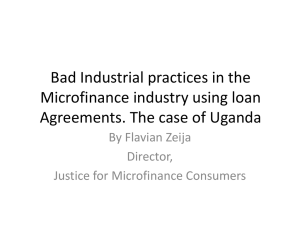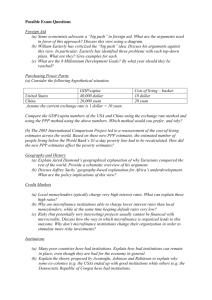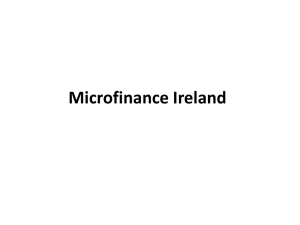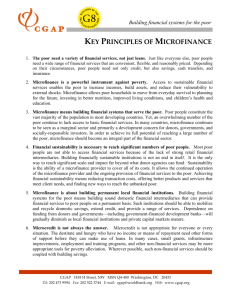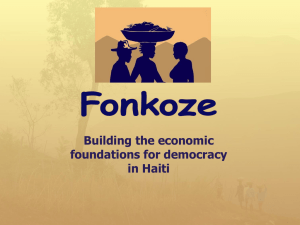NOTES ON MICROFINANCE
advertisement
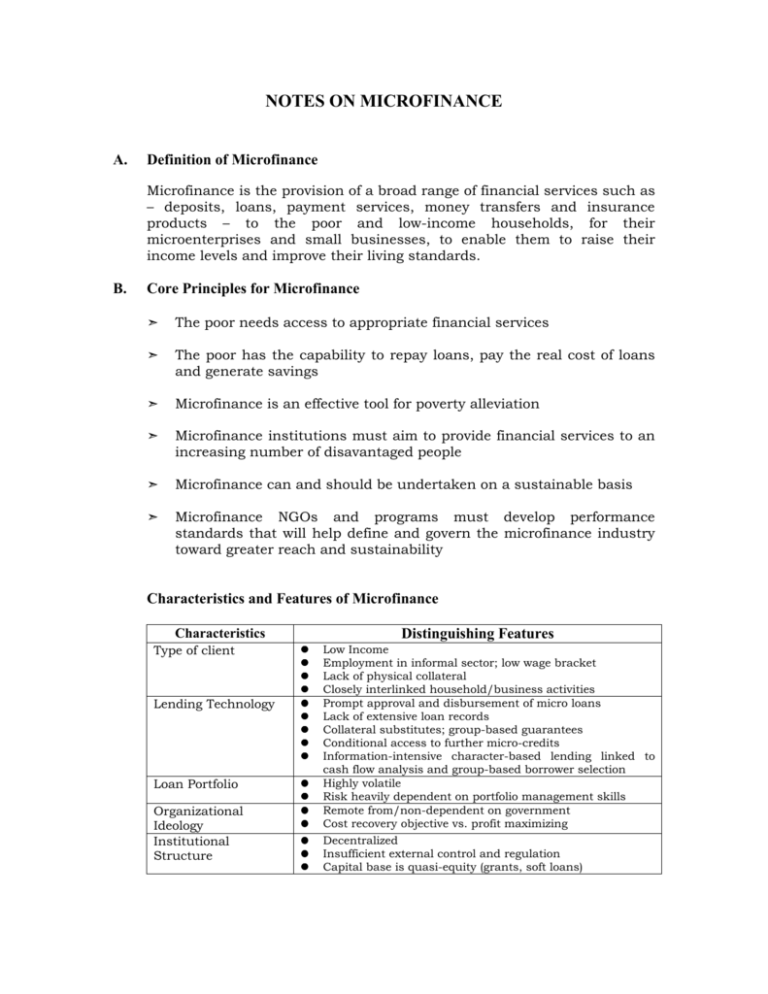
NOTES ON MICROFINANCE A. Definition of Microfinance Microfinance is the provision of a broad range of financial services such as – deposits, loans, payment services, money transfers and insurance products – to the poor and low-income households, for their microenterprises and small businesses, to enable them to raise their income levels and improve their living standards. B. Core Principles for Microfinance ➣ The poor needs access to appropriate financial services ➣ The poor has the capability to repay loans, pay the real cost of loans and generate savings ➣ Microfinance is an effective tool for poverty alleviation ➣ Microfinance institutions must aim to provide financial services to an increasing number of disavantaged people ➣ Microfinance can and should be undertaken on a sustainable basis ➣ Microfinance NGOs and programs must develop performance standards that will help define and govern the microfinance industry toward greater reach and sustainability Characteristics and Features of Microfinance Characteristics Type of client Lending Technology Loan Portfolio Organizational Ideology Institutional Structure Distinguishing Features Low Income Employment in informal sector; low wage bracket Lack of physical collateral Closely interlinked household/business activities Prompt approval and disbursement of micro loans Lack of extensive loan records Collateral substitutes; group-based guarantees Conditional access to further micro-credits Information-intensive character-based lending linked to cash flow analysis and group-based borrower selection Highly volatile Risk heavily dependent on portfolio management skills Remote from/non-dependent on government Cost recovery objective vs. profit maximizing Decentralized Insufficient external control and regulation Capital base is quasi-equity (grants, soft loans) 2 C. Definition of Microfinance loans Microfinancing loans are small loans granted to the basic sectors, on the basis of the borrower’s cash flow and other loans granted to the poor and low-income households for their microenterprises and small businesses to enable them to raise their income levels and improve their living standards. These loans are typically unsecured but may also be secured in some cases. D. Level of Microfinance Loan Average microfinance loan of an NGO microfinance institution or of a cooperative bank or credit union in the Philippine case is about P25,000 (from a low of P2,000 to P5,000). To be realistic, the maximum principal amount of a microfinance loan can be pegged at P150,000. This is equivalent to the maximum capitalization of a microenterprise under R.A. 8425. E. Collateralization of Microfinance Loan A microfinance borrower is not likely to be able to borrow from a large commercial, thrift or rural bank but from an NGO microfinance institution or perhaps from a small rural or cooperative bank. Thus, microfinance loans are typically unsecured, for relatively short periods of time (180 days) with monthly (or more frequent) amortizations of interest and principal, and often featuring a joint and several guarantee of one or more persons and, certainly, seldom with tangible collateral. But in some cases, they can also be secured, depending on the capacity of the borrower to offer collaterals acceptable to the lending institution. F. Interest on Microfinance Loans Old Approach The old (and by now highly discredited as ineffective) approach to loans for low-income borrowers emphasized subsidized interest rates. It did not recognize that subsidized below-market interest rates do not necessarily result in opening up access to financial services for low-income households and microenterprises. New Approach The new approach which has been demonstrated by global experience is characterized by a market-based interest rate regime which permits the institution providing microfinance services to cover administrative costs, provisions for loan losses and intermediation/funding costs. This basis is consistent with financially sustainable rural finance and microfinance. Invariably, the global 3 experience continues to validate the proposition that what matters most to the poor and undeserved segments is access to financial services rather than their interest-rate cost – most especially because microenterprise and small business borrowers will take a microfinance loan whose repayment periods match the additional cash flows they hope to generate. Therefore, interest on such microfinancing loans shall be reasonable but shall not be lower than the prevailing market rates. This is to enable the lending institution not only to recover the financial and operational costs incidental to this type of microfinance lending but also to realize some bottom line gains. G. Segments of Demand for Micro-credit (1) The landless who are engaged in agricultural work on a seasonal basis and manual laborers in forestry, mining, household industries, construction and transport; requires credit for consumption needs and also for acquiring small productive assets, such as livestock. (2) Small and marginal farmers, rural artisans, weavers and those selfemployed in the urban informal sector as hawkers, vendors and workers in household micro-enterprises: requires credit for working capital, including a small part for consumption needs. This segment largely comprises the poor but not the poorest. (3) Medium farmers/small entrepreneurs who have gone in for commercial crops and others engaged in dairy, poultry . . . . Among non-farm activities, this segment includes those in villages and slums engaged in processing or manufacturing activity. These persons live barely above the poverty line and also suffer from inadequte access to formal credit.



